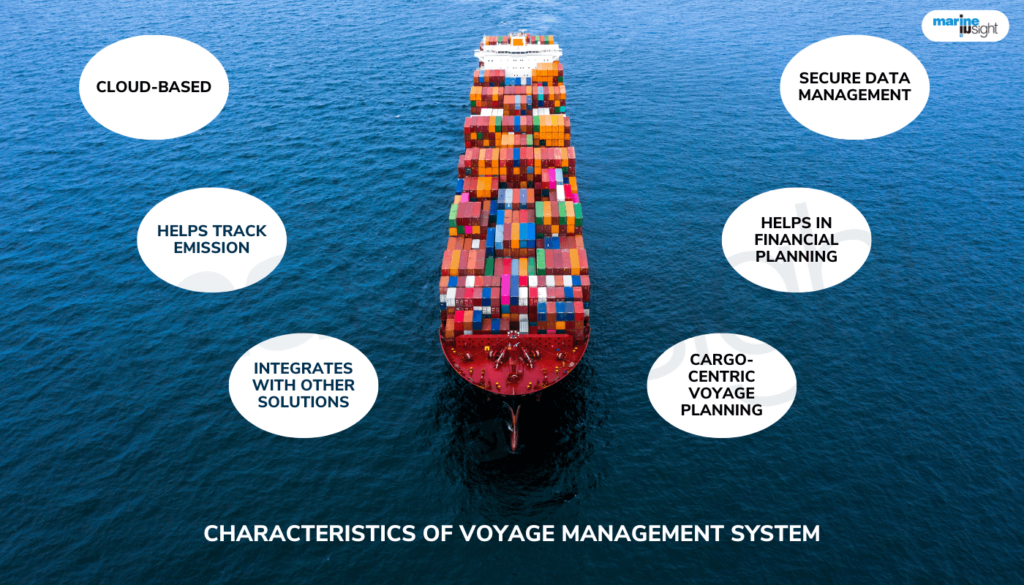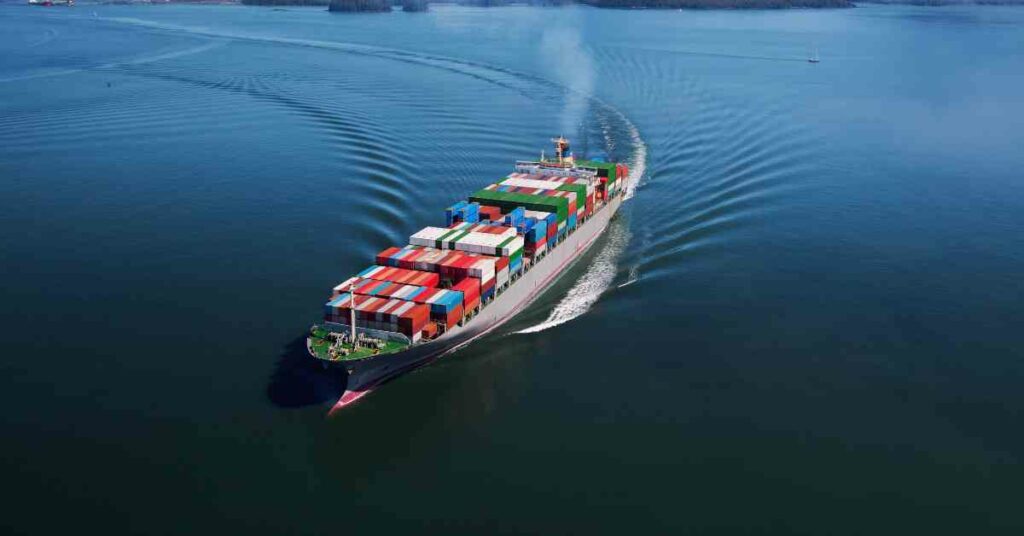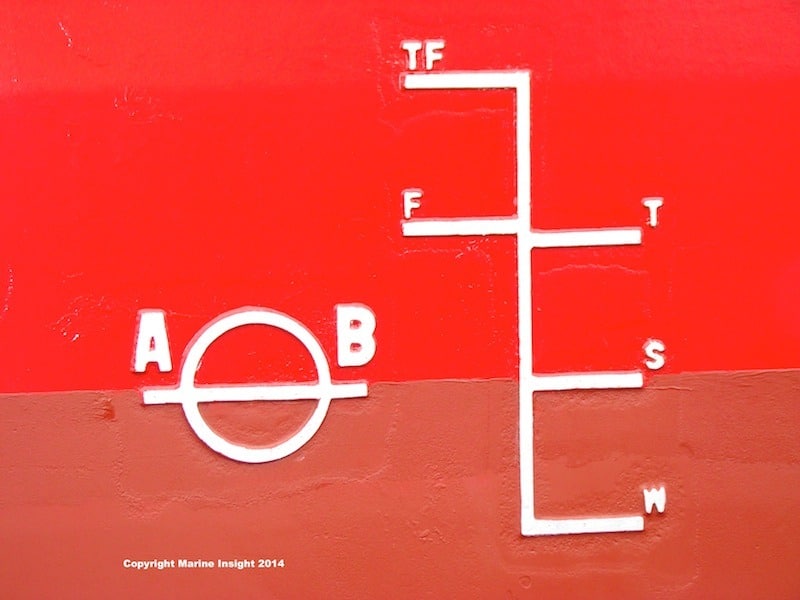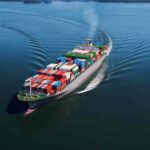Effects Of Wind On Ship Handling

When we speak about ships, the most prominent force that comes to our mind is that offered by the surrounding water body.
Delving deeper into the effects of water, the forces that act on a floating vessel can be further subdivided into various types like hydrostatic and hydrodynamic, and those kinds of loading stemming from wave action, also known as wave loads.
However, it is worth saying that the wind also significantly affects a floating vessel, though that is far, far lesser than those from water.
When a ship floats in the open, unbridled seas, there is the action of wind from every direction acting on the vessel.
The intensity of the wind depends on the local climatic conditions and may vary from a calm breeze to fiery gale storms. So, when a ship is designed, other than the principally acting hydrodynamic loads, the effects of wind are also considered.
The collective time-variant effects of wind action on a vessel bring about what we know as the wind resistance of the ship.
Before we delve further into the detailed effects of wind action, it is important to understand how the wind acts on a floating vessel. So, the effect of wind resistance on any vessel depends on three major factors:
- The nature and intensity of the wind, as mentioned above
- The extent of the area on which the wind forces act
- The directional characteristics of wind
Windage Area, Wind forces, and Wind Pressure
Concentrate on the second point. On any floating vessel, the wind acts primarily on the exposed area. Exposed area means the surfaces of the vessel that are directly under the influence of wind action. So, when you see a vessel floating on the sea at a specific draft, what areas are exposed to the wind?
As expected, everything which is above the waterline or which is not submerged. This includes the superstructure/deckhouse and the part of the main hull above the waterline, the extent of which is also known as the freeboard in technical terms. So, the greater the area subjected to wind action, the greater the effects.
In technical terms, this area is also known as the Windage Area. So, windage area is the sum of all areas when any view of a vessel is projected on a plane. The figure below clearly describes everything described so far.

What is the maximum area on any vessel where the wind can act? The answer lies in the way we perceive it in floating conditions.
As expected, the highest area on which the wind comes from that specific direction can act is the lateral area, or in other words, the profile view of the ship. The reason is simple. In any ship, the length is always more than the breadth. So, when viewed along the length or from a transverse or lateral direction, the surface is always more than when viewed in a longitudinal direction or from the aft or front.
For all practical purposes, the face area of the superstructure or deckhouse can be easily determined from the first principles as they mostly have straight edges and no curves.
On the other hand, determining the lateral projected area of the superstructure or deckhouse is slightly complicated as they often have curvatures characteristic to the hull form.
However, using design drawings, they can be estimated. For fuller-form vessels with lesser curvatures, like tankers, the approximate part of the main hull contributing to the windage area can be calculated as:
Length Overall (LOA) X Depth of the vessel (D) – Length between perpendiculars (LBP) X Average Draft (T).
It can be said that larger vessels with more windage area suffer a greater influence of wind action. Of course, for such vessels with high values of displacement (and thus inertia), the resultant effect is far less as compared to a lighter vessel under the same conditions. However, the type and design of the vessel are also important.
For example, a large passenger cruise ship with a high and broad superstructure will be more vulnerable to wind action as compared to a loaded tanker or bulker with a small deckhouse/superstructure and a lesser exposed area of the hull as well under high displacement.
At this point, it can also be said that a given vessel having a higher amount of loading, that is, having a higher displacement, has a reduced freeboard (due to higher immersion) and thus lower windage area as compared to when it is under a lighter load condition, that is having a lower value of displacement. Hence, lower windage area coupled with greater inertia (due to increased displacements) leads to significantly much lower effects of wind action in the case of higher loading.
All classification rules for loads take this windage area and the resultant action of winds under consideration.
Accurate determination of the wind force is a complicated task as in sea conditions, the wind forces can be highly non-uniform and erratic in nature. However, for all practical purposes, the wind force can be approximately calculated (in tonnes per square metre) as per the empirical relation:
W X V2 /18000
Where W is the windage area in square meters as determined from above, and V is the velocity component of the wind in the direction of action on the given windage area. That is, when a random sea wind is acting on a vessel from any arbitrary direction, the component of velocity in the lateral direction is perpendicular to the vessel’s length if we are interested in finding the force acting on the profile of the vessel and the component of the velocity in the longitudinal direction if we are interested in finding the wind forces on the front or aft end of the vessel.
For a beam wind, almost the entire value of the total wind forces is assumed to be acting on the vessel from its sides with no component in the longitudinal direction. Similarly, for a typical headwind condition, the entirety of the wind-induced forces is acting in the fore-aft or longitudinal direction with nearly no component in the transverse or lateral direction.
Wind Pressures
Along with the windage area, it is crucial to understand the effects of wind forces in a vertical sense, that is, how a wind force acting on the vessel from the sides can influence the loads. It is fair to consider that the effects of wind on a given exposed region of a vessel can be deduced from the vertical height above the baseline.
For a floating vessel, the baseline can be considered the line about which the resultant moment acts from the component of wind force produced. Henceforth, the lever or moment arm can be taken as the distance between the baseline or bottom of the ship and the centroid of the area over which the wind is taken to act.
So, for a given area A on the superstructure, VCG alludes to the vertical centre of gravity of the given area above the baseline, which in this case is the same as the moment arm or lever for the moment from wind forces.
And the net moment from the wind action is given as the product of the vector component of the wind force acting on the area (point load acting on the centroid of the area) multiplied by the VCG or vertical moment. Thus, for higher superstructures, the wind action on the upper regions is more pronounced as compared to the lower ones due to higher moments caused.
The pressure distribution also varies accordingly, with the gradient decreasing from top to bottom. The pressure for a given area under wind action can be calculated simply by dividing the net value of wind force acting divided by the area (P=F/A).
One very important consideration, in this case, is that the wind has a uniform distribution of loading over the area, which acts for simplicity of estimations. Though in real scenarios, the nature of a blowing wind is highly random and over any given area, its intensity varies from point to point.
After we have discussed the windage area and wind pressures, it is now important to learn more about how the directionality of the wind can affect a floating vessel. But before that is important to know about the types of wind-based on their direction.
Types of Winds and Wind Action on planar turning
The types of wind-based on the direction can be categorised as follows:
- Headwind: This is the wind which acts in a direction opposite to the vessel’s heading. As they interfere with the vessel’s surge, it produces the highest level of wind resistance to the vessel.
- Aft wind: They also act in a longitudinal direction but from the aft direction of the vessel. As they are concurrent with the vessel’s heading, they constructively interfere with the surge headway and may also bring about increasing the speed of the vessel without the expense of propulsive power, something very desirable.
- Beam winds: They act in a direction perpendicular to the vessel’s length and, thus, headway. The resultant forces affect the vessel’s surge as they tend to drive the vessel in a lateral or sideways direction, also influencing the manoeuvring problems of the vessel. Suppose the vessel has a significantly high windage area as described. In that case, they produce large degrees of resistance, which may exceed that produced by an equivalent intensity headwind due to the forces acting on the profile.
- Oblique winds: These winds flowing from any arbitrary direction are most common. They act in both the longitudinal as well as transverse directions. For estimating the effects of the wind on the vessel along a particular direction, they can be resolved into respective components and combined with the windage area as described above.
Now, while we know about the different directions of wind, it is crucial to understand how it affects the vessel in terms of manoeuvring.
Recall that previously we had discussed how the wind force creates a moment at any given area. So, while we take the entire windage area into consideration, the net result of the wind forces can be considered acting on a centroidal point known as the Centre of effort of the wind, often denoted as W. In other words, this W is the weighted average of all the centres of action of the wind forces.
Now, also recall that all kinds of turning effects of the vessel are based on the pivot point of the vessel, P.
This pivot point, P, is forward of the midship and close to the bow when the vessel is moving ahead, and vice-versa when the vessel is moving astern. When the vessel is at rest, the pivot point is more or less close to the midship for all practical purposes.
So, the interplay of the pivot point with this centre of effort affects the turning tendency of the vessel based on the intensity of the wind and the current displacement of the vessel, of course. The physics of turning is based on the lever WP, which is the distance between these two points.
Though there can be several cases for consideration, for now, in this article, we consider a few simplistic cases.
- When the vessel is at rest, and there is pure beam wind: In this case, as the vessel is at rest, the pivot point can be considered at midships. For beam wind cases, in a longitudinal sense, the centre of effort will also be near midships only. So, it can be said that both W and P are close to each other, and thus, the lever or moment arm for turning, WP, is very small or almost negligible. However, if the wind forces are significant and the vessel’s displacement is not sufficient to fully resist the wind forces, there can be a lateral drift of the vessel in the direction of the wind. So, for vessels at rest and having beam winds, there is no tendency for turning the vessel but can be a tendency to drift sideways.
- When the vessel is moving ahead, and there is beam wind: When a vessel is surging ahead, the pivot point is skewed towards the bow. Considering a uniform flow of wind, the centre of effort can be considered close to the midship again. So, this separation between these two points creates a turning lever that causes the vessel to rotate.
- When the vessel is moving astern, and there is beam wind: This is the reverse case, and for the same orientation of the vessel and wind direction, the turning sense is opposite.
- For headwinds and aft winds, as discussed above, the winds can only constructively or destructively interfere with the vessel’s linear motion. Since the wind force vector is concurrent with the ship’s centerline, there is no turning moment created.
There can be other complicated cases as well in various combinations depending on wind direction and vessel orientation. The effects of wind when the vessel is not on a level waterline and has a trim forward or aft are complex and are omitted from discussion in this article.
Wind forces are of good importance when the berthing of the vessel is taken into consideration.
You might also like to read-
- What is Transverse Thrust in Ships?
- What Do You Mean By Stopping Distance Of A Ship?
- Understanding Turning Circle Of A Ship
- Types Of Water Transport
- What is Flotsam and Jetsam in Shipping?
Do you have info to share with us ? Suggest a correction

About Author
Subhodeep is a Naval Architecture and Ocean Engineering graduate. Interested in the intricacies of marine structures and goal-based design aspects, he is dedicated to sharing and propagation of common technical knowledge within this sector, which, at this very moment, requires a turnabout to flourish back to its old glory.
Latest Marine Navigation Articles You Would Like:
Subscribe To Our Newsletters
By subscribing, you agree to our Privacy Policy and may receive occasional deal communications; you can unsubscribe anytime.















